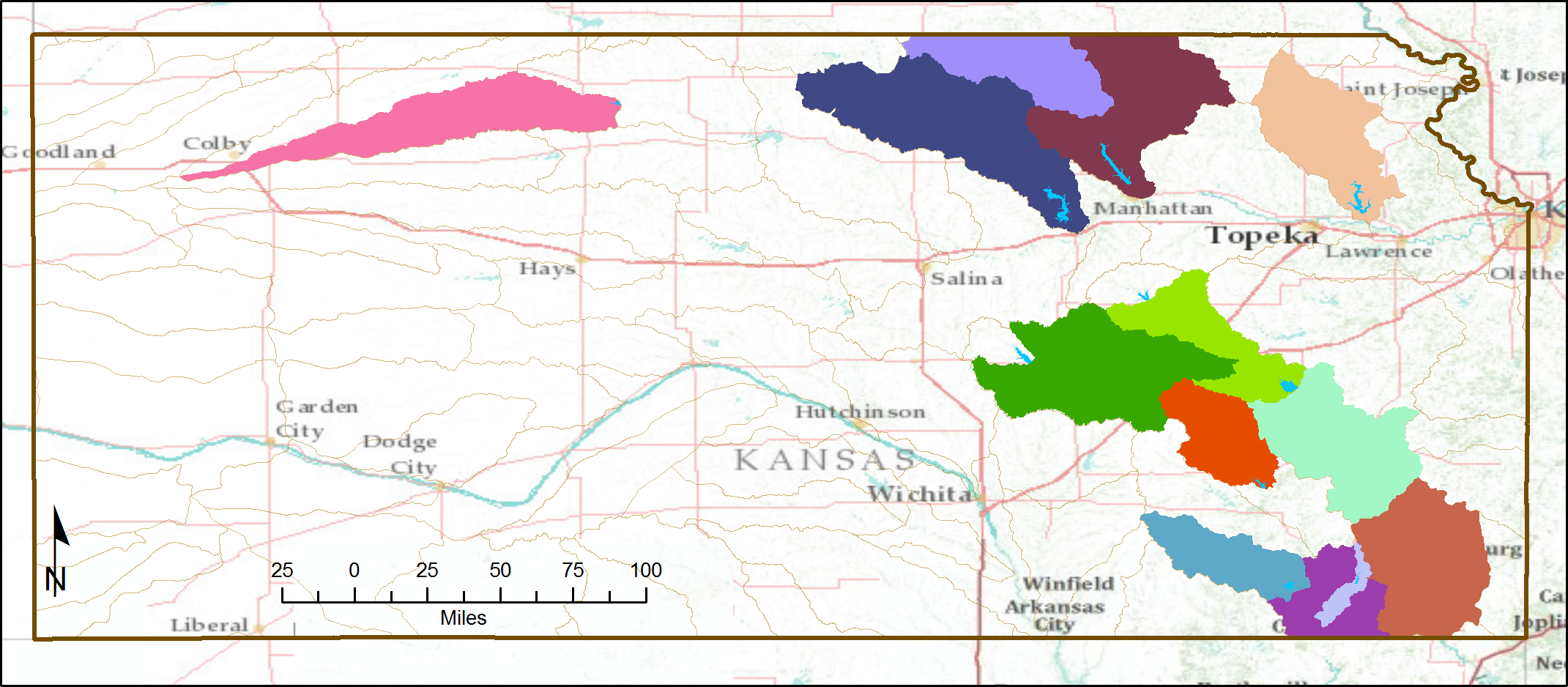Watershed Restoration and Protection Strategy (WRAPS)

Watershed Restoration and Protection Strategy (WRAPS) is a planning and management framework that engages stakeholders within a particular watershed in a process to:
- Identify watershed restoration and protection needs and opportunities
- Establish management goals for the watershed community
- Create a cost-effective action plan to achieve goals
- Implement the action plan
WRAPS represents a shift from "top-down" government intervention in watershed issues, to a more citizen-stakeholder approach, in which funds, guidance and technical assistance are provided for stakeholders to reach consensus on issues of relevance in their watershed, and then design and execute a plan to address those issues. More information on Kansas WRAPS can be found at Kansas WRAPS website.
Kansas State Research and Extension and Department of Biological and Agricultural Engineering have been sponsoring all phases of the WRAPS process since 2003. There have been ten WRAPS project completed, and two are currently underway. The watershed modeling team at BAE is heavily involved in the assessment phase. During the assessment phase we study the watershed, collect available information in a form of GIS layers and data tables, update this information using knowledge of watershed residents and stakeholders, and run multiple scenarios to identify critical areas of highest pollutant runoff potential and assess the health of the watershed.
K-State WRAPS watersheds
- Lower Big Blue River and Lower Little Blue River Watersheds
- Milford Reservoir Watershed
- Upper Neosho Watershed
- Middle Neosho Watershed
- Neosho Headwaters Watershed
- Upper and Lower Cottonwoods Watershed
- Toronto Reservoir Watershed
- Oologah Lake Watershed
- Big Hill Creek/ Big Hill Lake Watershed
- Toronto Reservoir Watershed
- Elk City Lake Watershed
- Delaware River Watershed
- Kirwin Lake Watershed
